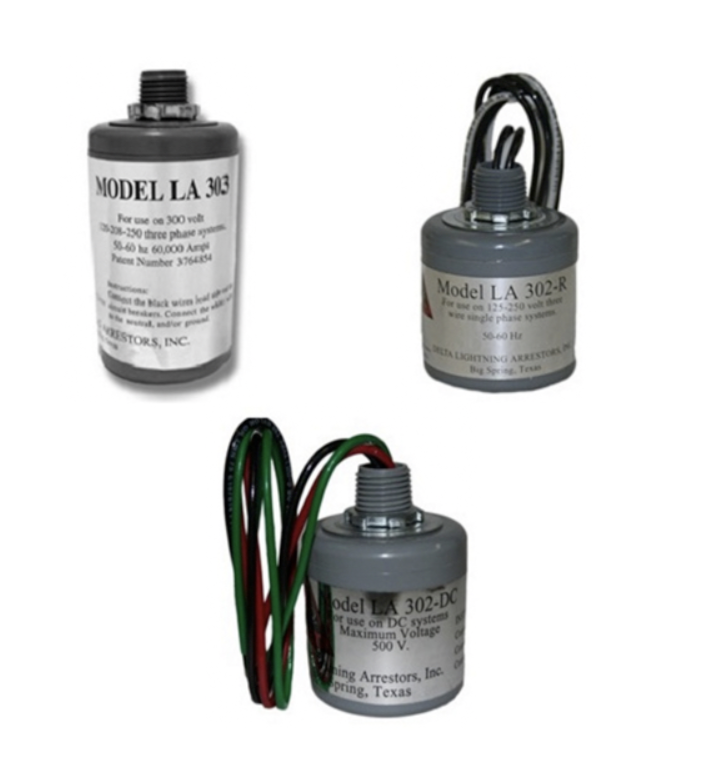Solar Lightning Arrestors

Lightning arrestors for solar power systems are of utmost importance. They are highly specialized surge protection devices that divert the damaging high-voltage spikes caused by lightning strikes or static electricity away from the vulnerable components of the power system. By doing this, they protect not only the system's delicate electronic parts but also the solar arrays themselves.
In providing this kind of crucial protection, solar lightning arrestors ensure the overall safety and longevity of solar power systems. If you have either a home or business solar power system, the consequences of a lightning strike are not something you want to contemplate. How do solar power systems protect themselves against lightning? By using effective grounding systems and surge protection devices.
More Information about Solar Lightning Arrestors
In tandem with a grounding system, a surge protection device diverts a voltage surge to where it won't do any harm—into the ground. To make this system work as needed, the grounding system itself has to be well-designed. A bad lightning day in the Eastern United States can produce as much as 6.1 million volts of potential energy per strike. This is why a lightning rod and bare copper wire must figure prominently in the good grounding system that is necessary for any solar array to be placed in an exposed location.
The most effective way to achieve lightning protection for a solar electric system is to follow proper installation procedures and to adhere closely to the manufacturer's instructions and relevant industry standards. Some of the important components that make up a good solar lightning protection system are the ground wire, the connecting wire, and the ground rod itself. When these components function well together, the solar system is much less likely to suffer damage during an electrical storm. The magnitude of protection afforded by a solar lightning arrestor system is comparable to that of a PV system which works well under high electrical stress.
FAQs
Do solar lightning arrestors absorb voltage spikes caused by lightning in order to protect electronic equipment and promote electrical safety?
Yes, solar lightning arrestors absorb voltage spikes caused by lightning and redirect them to the ground, protecting electronic equipment and promoting electrical safety in solar power systems.
Coax Lightning Arrestors Basics
4 things to consider when selecting lightning protection for coax connected devices:
Frequency range
All lightning protectors offer a specific frequency range that they protect against. For example, a protector may offer 698 megahertz all the way up to 2.7 gigahertz of protection.
Connection type
The most common connector is N female, however, there are also N male, TNC or many other different types of connections. In some cases the protector offers bidirectional protection so the input and output can be reversed.
DC pass vs DC block type protectors
DC pass type protectors are used if power is needed at the antenna tower to power a particular device. It allows low voltage current to pass through the center pin of the coax cable to power the device. If no power is needed at the antenna tower, a DC block type protector is used, which would not allow any current to pass through the center pin of a coax connector.
Technology type
The most common and cost effective type of technology is gas tube protection. In most cases, it will last about five years. One thing to consider with gas tube protectors is that they can build up static electricity over time, and if that static electricity discharges, it can damage equipment. The second type of technology is coil inductors. Coil inductors offer very reliable protection against lightning strikes and heavy surges, as well as not degrading over time. They only need replacement with significant lightning strikes. There is no threat of static buildup with a coil inductor protector. The only real disadvantage of using coil inductor technology is the cost. Typically, they are about 30 to 40% more expensive than gas tube technology.

